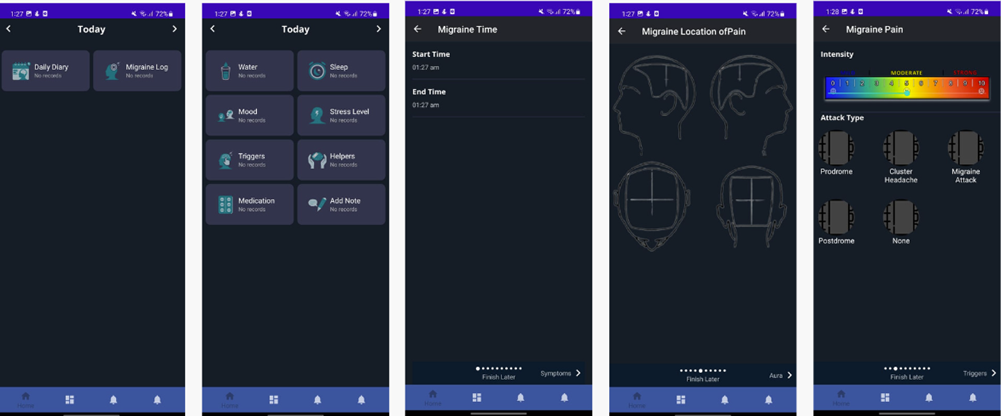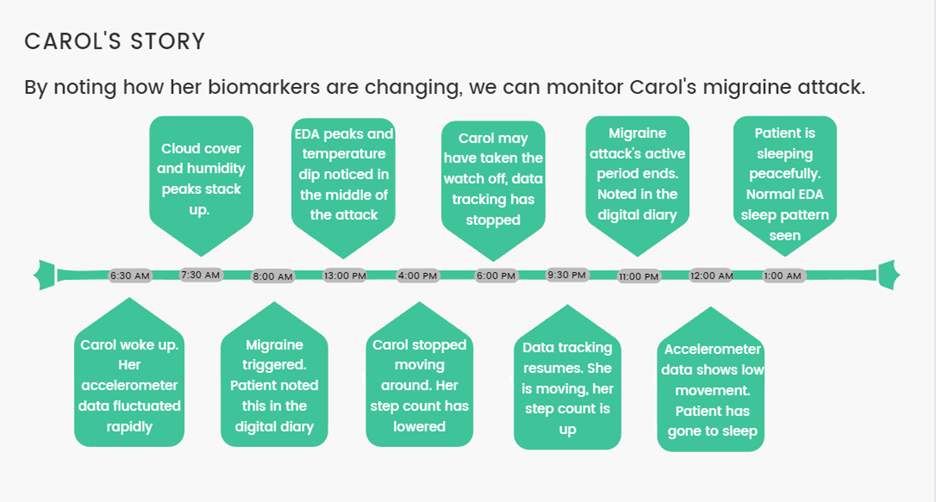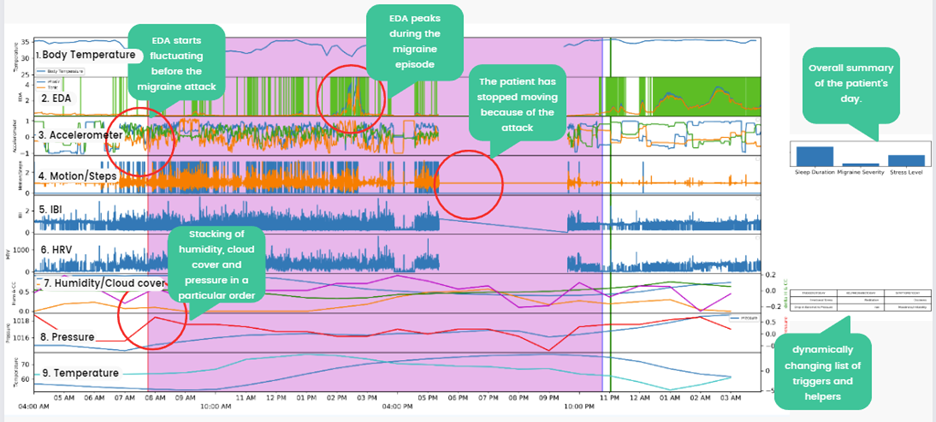
Sheza Munir - Winner of the Health Tech Pitch Competition
Sheza Munir, a Computer Science junior at LUMS, won the Health Tech Pitch Competition at the first Health Data Science conference for her Migraine Prediction Engine. The Clinical and Translational Research Incubator (CITRIC) at Aga Khan University (AKU) organized the conference from March 2nd to 4th, 2023. The aspiring health informatician shares the journey of her award-winning project.
Sheza vividly remembers standing in the middle of the stage, with hundreds of ears focusing on her every word. Presenting her work to top-tier researchers in Pakistan on a topic she held so dear to her heart was one of the proudest moments of her life. Being the only female and the only undergraduate at this conference meant that she had achieved something monumental, and the winning certificate was tangible proof of her months of effort.
The country's first Health Data Science conference focused on amalgamating medical research with the latest advancements in computer science. The two-day event included a pitch competition that showcased groundbreaking projects from leading universities in Pakistan. The competition aimed to foster future collaborations and open doors for joint projects with the invited universities.
Sheza was LUMS’ representative for the competition. She and her team of Dr. Basmaa Ali, Dr. Agha Ali Raza, Danyal Maqbool, Saad Hasan Iqbal and Syeda Mah Noor developed a Migraine Prediction Engine leveraging data from longitudinal studies of several migraine patients, encompassing all subtypes of migraines. Her project employs health technology to treat chronic disorders by predicting a disease event pre-occurrence. The method can then be extrapolated over other chronic diseases.
Why Migraines?
A migraine is marked by a moderate to severe headache, usually localizing in one part of the head and causing nausea, hypersensitivity to light and sound, and dizziness. It is a common disease, affecting 1 in 5 women and 1 in 16 men, and it usually goes untreated for most people. As the statistics suggest, women suffer from migraines more occasionally than men. 2/3rd of migraineurs are women. It becomes an even bigger problem once puberty hits, as menstruation is a big trigger for migraines. This became one of the top motivations for Sheza and her team to work on this topic. Unfortunately, adding to the problem, Pakistan ranks 143/156 countries on the global gender gap index for healthcare outcomes. The crisis does not end here. Migraine and its treatments not only burden the affected and the healthcare system but also significantly impact the GDP due to a major loss in productivity. The team calculated an estimated loss of around 20 billion dollars per annum in productivity. Therefore, predicting a migraine attack in time and thus preventing it would be a major achievement on several frontiers.
How does the Prediction Engine work?

The dataset comprises three main streams that were collected from 3 sources:
1) Smartwatches to track digital biomarkers like heart rate, electrodermal activity, and body temperature.
2) Diary logging on smartphones for the migraine location, duration, and time.
3) Weather data for the heat levels, cloud cover, and air pressure.
These three data streams are then manipulated according to every individual to track and predict a migraine event 24-48 hours pre-occurrence and suggest helpers (mitigating factors) that would aid the individual when the migraine occurs. Nine variables are fed to a Wav-2-Vec model, an already developed model used in speech prediction that uses contextual basis to predict missing terms in a sentence by looking at the words before and after the missing word. The model creates a stack of the values and monitors them pre-migraine, mid-migraine, and post-migraine. Over the training period, the model learns the values that lead to a migraine event. Thus, the next time the stack values match the distinctive ones of a migraine, the model alerts the individual that a migraine event is about to occur and suggests precautionary measures. The model has conducted this procedure with an average of 94% accuracy over several tries.


However, the factor that truly puts Sheza’s particular migraine prediction model over the others is that this engine provides personalized feedback and personalized solution. Every migraineur has specific triggers and certain helpers. All prior studies have been done on groups that do not represent one person’s migraine event.
Sheza believes that interdisciplinary research, inculcating advancement in both healthcare and technology, is truly the way forward. While sharing her journey, she mentioned how every person on her team, from the faculty to the friends she made at AKU during the conference, played a vital role in winning the competition. The prize money of PKR 200,000/- has been invested in the project to aid with data collection.
Sheza hopes to bring her idea to fruition and get the model introduced in the healthcare industry in the upcoming years, thus bringing about a tremendous revolution in the field of health technology.

